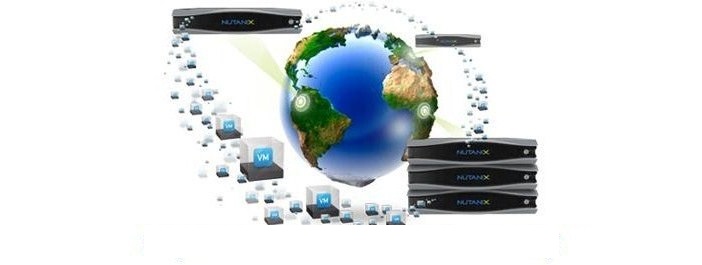
Disaster Recovery
Circular from RBI mandated all co-operative banks to implement CBS. That would assist in providing round the clock processing for all the products, services, and information of a bank. DNDCCB opted for Datacenter setup in their own premises. ESDS was selected as end-to-end solution provider for setting up the Datacenter. Redundant network connectivity to all branches and Disaster Recovery at ESDS Datacenter on Cloud Hosting model.
Incident
On Sunday, April 17, 2016, the officials at Dhule & Nandurbar District Central Co-operative Bank Limited were thrown into turmoil when they saw fumes coming out of the windows of their Head office. The fire started at around 8:30 am on the third and fourth floor of the bank where the corporate offices were located. DNDCCB’s on-site DC located in the same place hosted all the critical data and client information along with all the transactions and banking operation information.
Losing this data could have resulted in some serious consequences. The fire was so intense that it took around 70 fire brigades and 5 hours to get the situation under control. The Bank lost all of its IT assets and important documents in the accident. But thankfully the DC was on the second floor so it was unharm. While there was no harm to the Servers and Storages in the DC. But the outdoor units of PAC’s and Electrical Systems had got damaged. So, the DC became completely inaccessible.
Since the Business Continuity Plan was already in place by ESDS. All the data was safe and business operations could be resumed without any loss of data.
Execution Framework
ESDS’s dedicated monitoring team caught site of the scenario and immediately instructed the bank officials to shut down the DC operations on priority & have it sealed.
DC Security team contacts BCP Committee for DR Approval:
The incident took place around 8:30 am and the data was backed up at DR Site (ESDS Datacenter) till 8:28 am. As soon as the Security team informed ESDS about the Scenario. The 24/7 support team contacted DNDCCB BCP Committee.
After investigating the complete situation of the fire disaster at DNDCCB. It was concluded that the bank head office has taken a major toll due to the catastrophe and it can take weeks. If not months for the bank to completely resume its standard operations. In the meantime, ESDS’s “Service Delivery” team took charge of the situation and made sure that DNDCCB DC infrastructure is secured by taking preventive measures on-site and took consent of the BCP committee to initiate DR process.
After DNDCCB’s BCP Committees consent. ESDS was able to immediately initiate the DR switch over within 2 hours of the disaster. Dhule BCP team was then update about the DR activation and request to verify data integrity and application accessibility at their end.
Service Delivery
After successful switchover to DR site at ESDS. The Service delivery team took a follow up for another 4 hours and make sure that all 90 branches of DNDCCB are connect to the DR site and the operations are running smoothly at all branches. “Complete Disaster Recovery” was achieve with near zero data loss.
Operations Recovered from DR Site:
The Dhule & Nandurbar DCCB was successful in transitioning all of its 90 branches to the DR site and was able to make sure the banks operations don’t get hampered. To the outside world, the bank was open for business as usual. The Bank has been able to curve paths towards achieving business benefits by offering state-of-the-art services to customers through their branches across Dhule & Nandurbar districts with no hindrances in its work processes.
Best DR practices every organization needs to consider before implementing a DR solution:
It is very important that the DR location ought to be no less than 150 km’s from the DC site and not so far. That it hampers the required RPO & RTO. The required RPO can determine by calculating the price of downtime for the business and weighing it against the respective investments in DR infrastructure. It should note that while there are tangible costs that results from business interruption. There are also intangible costs that would surface in the form of lost opportunities for new business to the competitors, loss of reputation etc.
Importance of DR Drills:
DR Drills plays a vital role in the whole process but its importance is often ignore by many organizations. ESDS makes sure to perform at least two DR drills every year with DNDCCB team in order to test all the applications, creating solutions for ways to access the critical applications and programs in the event of a disaster.
This is done in order to rectify any discrepancies found during the drill thereby eliminating them during the actual Disaster. This is one of the most crucial parts of the disaster recovery plan for any organization. In the event of disaster, where the operations from HO as in the case of DNCCB are down. RBI has very strict policies to adhere in CBS, as it can result in the voiding of SLA’s and cancellations of Licenses.
In this article, we have sketched out DNDCCB’s present business continuity arrangements. In terms of various requests from the financial institutes. It ought to likewise notice that, in spite of the fact that the Bank’s DR plan incorporate arrangements to address extremely severe conditions resulting due to a disaster. It is not necessary that all the financial institutions prepare for such conditions in the same manner.
Significance of DR
The 17th April Fire Incident at DNDCCB head office have demonstrated the significance of business continuity planning/Disaster Recovery addressing wide-range interruptions. Prompted numerous financial institutes to audit and fortify their own DR arrangements. To empower and help these moves by financial institutions, and along these lines guarantee the viable functioning of payment and settlement systems, security & stability of the financial market in India even in times of disasters.
“Disaster Recovery isn’t a one size fits all methodology. Every business is distinctive and every application, a group of clients and organization will have distinct necessities. Our real-time auto scaling Cloud platform is a perfect fit for all types of Organizations and all such DR setups are managed and monitored 24×7” says Piyush Somani, MD & CEO, ESDS Software Solutions Pvt. Ltd.
Disaster recovery and business Continuity planning are basic parts of the overall risk management for an organization. Since the majority of the threats can’t dispense. Organizations are executing disaster recovery and business continuity plan to get ready for possibly unexpect disasters. Both procedures are similarly critical on the grounds. That they give detail strategies on how the business will proceed after extreme interferences and catastrophes.
Cases With Organizations
In the case of a disaster, the proceedings with operations of your organization rely upon the capacity to replicate your IT frameworks and information. The disaster recovery arrangement stipulates how an organization will plan for a disaster. How the organization will response, and what steps it will take to guarantee that operations can be reestablish. Disaster recovery depicts the greater part of the strides required in making arrangements for and adjusting to a potential disaster with a guide. That will reestablish operations while minimizing the long haul negative effect on the organization.
On the other hand, Business continuity plan recommends a more thorough way of ensuring your business is operational. After a characteristic calamity, as well as in the case of littler disruptions. Business continuity includes keeping all parts of a business functioning as opposed to simply technology systems. DR arrangement is a genuinely new approach that teaches what steps an organization must take to minimize the impacts of administration interference. This will restrict the transient negative effect on the organization.
Key Takeaways:
• DNDCCB was able to tackle a crucial disaster situation which could have hampered the entire operation of the bank.
• 100% uptime for Data Center, DR, and 99.95% connectivity uptime achieved for all branches
• The entire set-up deployed for DR is capable of recovering in case of disasters at a primary location within an hour (RTO = 1 hour).
• Secure Connectivity solution from 90 branches to the DC
• Prior DR Drills Assured Smooth & Secured move to the DR Site after the incident.
• Disaster Recovery monitoring with eMagic DCIM tool made it easy to address the calamity the
moment it happened and take appropriate actions.
• Short RPO helped in zero transaction loss.
• Bank was able to continue regular operations within an hour after the incidence.
The objective behind this article is to enlighten all the banks & financial institutions with the importance of DR/Business continuity plans. It is very important to have the right approach, well-defined DR plans and an experienced technology partner in place. DNDCCB was smart enough to do so, are you?
Data Sensitivity
Data Sensitivity is an integral part of any organization and DNDCCB being a co-operative bank have all their critical data host at Dhule Data Center. DNDCCB had a forecast and vision for the requirement of a DR solution. DNDCCB with the help of ESDS pro-actively Implemented DR Solution around 2 years back.
DR site was up and fully functional with regular DR Drills & Testing performed by ESDS at least twice a year. DNDCCB was never prepare for any Disaster. But the mandate from RBI to have a fully functional Disaster Recovery site is what saved us from a major Fire hazard that completely destroyed our Head office. The Data Center at Dhule also get badly affect.
The bank highly appreciates ESDS support with the successful & efficient transition of its 90 branches to the DR site and made sure the banks operations doesn’t get hampered due to the Fire scenario happened at its head office. The Bank has been able to curve paths towards achieving business benefits by offering state-of-the-art services to customers through their 40+ branches across Dhule and Nandurbar districts with no hindrances in its work processes.
The bank was fully functional from the very next day without any data or transaction loss. Network service was scale to other 50 branches within few days. All 90 branches started running from the Disaster Recovery Cloud hosting solution provided by ESDS. All our branches continue to function from the DR solution of ESDS from last 2 months.
After the Fire incidence, ESDS’s DR Rescue team was available at the incident site within 2 hrs. The support team after analyzing the complete scenario and understanding the criticality of the situation worked 24/7 on the DR. Therefore, Activation process ensuring all the branches were fully operational the very next day of the incidence.
Bottom Line
I would like to extend my gratitude on behalf of the bank. We are really thankful for ESDS’s Exuberant support in such a crucial moment of time. Thus, Loss of any data would have created major problems for the DNDCCB Bank. But we were fortunate enough that ESDS restored entire banking operation from the DR site with 0 data loss.





